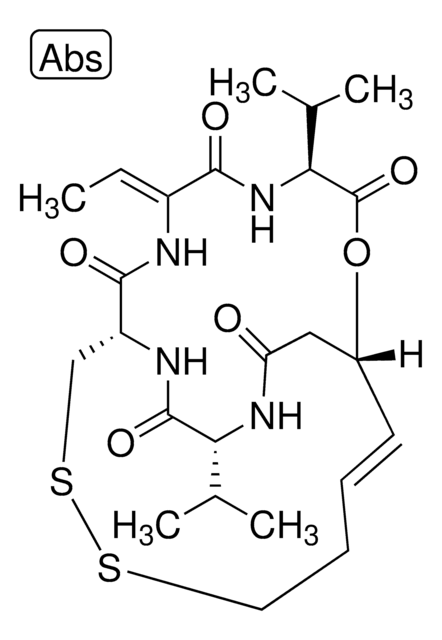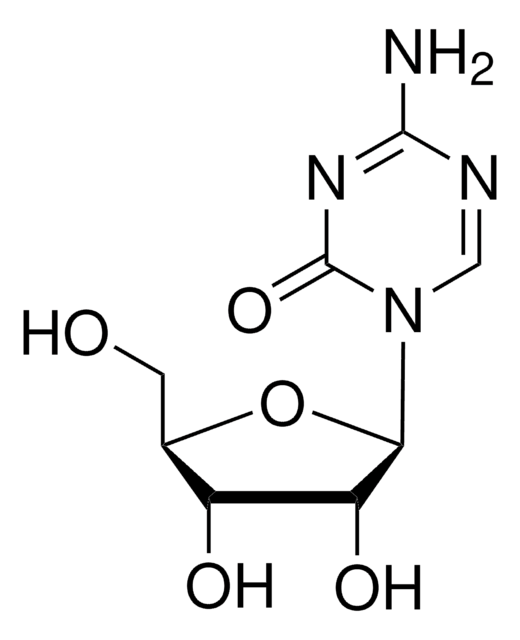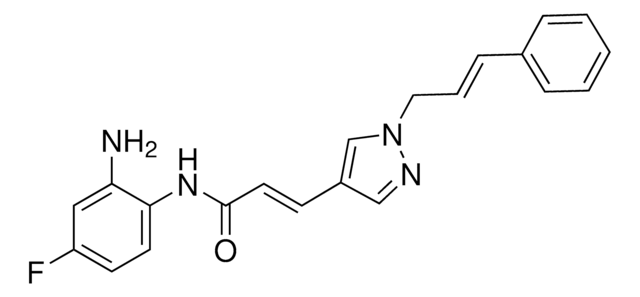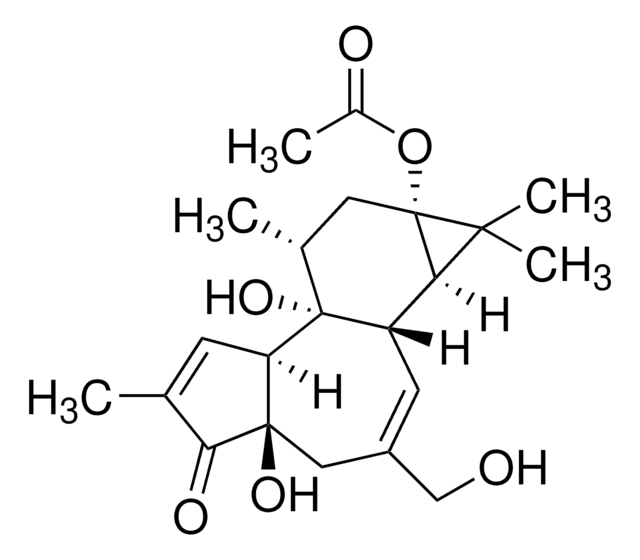SML0061
SAHA
≥98% (HPLC), powder, HDAC inhibitor
Sinónimos:
N-hydroxy-N′-phenyl-octanediamide, Suberoylanilide hydroxamic acid, Vorinostat
About This Item
Productos recomendados
product name
SAHA, ≥98% (HPLC)
Nivel de calidad
Análisis
≥98% (HPLC)
formulario
powder
color
white to tan
solubilidad
DMSO: ≥15 mg/mL
Condiciones de envío
wet ice
temp. de almacenamiento
−20°C
cadena SMILES
ONC(=O)CCCCCCC(=O)Nc1ccccc1
InChI
1S/C14H20N2O3/c17-13(15-12-8-4-3-5-9-12)10-6-1-2-7-11-14(18)16-19/h3-5,8-9,19H,1-2,6-7,10-11H2,(H,15,17)(H,16,18)
Clave InChI
WAEXFXRVDQXREF-UHFFFAOYSA-N
Información sobre el gen
human ... HDAC1(3065) , HDAC2(3066) , HDAC3(8841) , HDAC6(10013)
¿Está buscando productos similares? Visita Guía de comparación de productos
Aplicación
Acciones bioquímicas o fisiológicas
Características y beneficios
Palabra de señalización
Danger
Frases de peligro
Consejos de prudencia
Clasificaciones de peligro
Muta. 2 - Repr. 1A
Código de clase de almacenamiento
6.1C - Combustible acute toxic Cat.3 / toxic compounds or compounds which causing chronic effects
Clase de riesgo para el agua (WGK)
WGK 3
Punto de inflamabilidad (°F)
Not applicable
Punto de inflamabilidad (°C)
Not applicable
Certificados de análisis (COA)
Busque Certificados de análisis (COA) introduciendo el número de lote del producto. Los números de lote se encuentran en la etiqueta del producto después de las palabras «Lot» o «Batch»
¿Ya tiene este producto?
Encuentre la documentación para los productos que ha comprado recientemente en la Biblioteca de documentos.
Los clientes también vieron
Artículos
We presents an article on Autophagy in Cancer Promotes Therapeutic Resistance
Epigenetic modifications are thought to occur through two key interconnected processes—DNA methylation and the covalent modification of histones.
Nuestro equipo de científicos tiene experiencia en todas las áreas de investigación: Ciencias de la vida, Ciencia de los materiales, Síntesis química, Cromatografía, Analítica y muchas otras.
Póngase en contacto con el Servicio técnico












